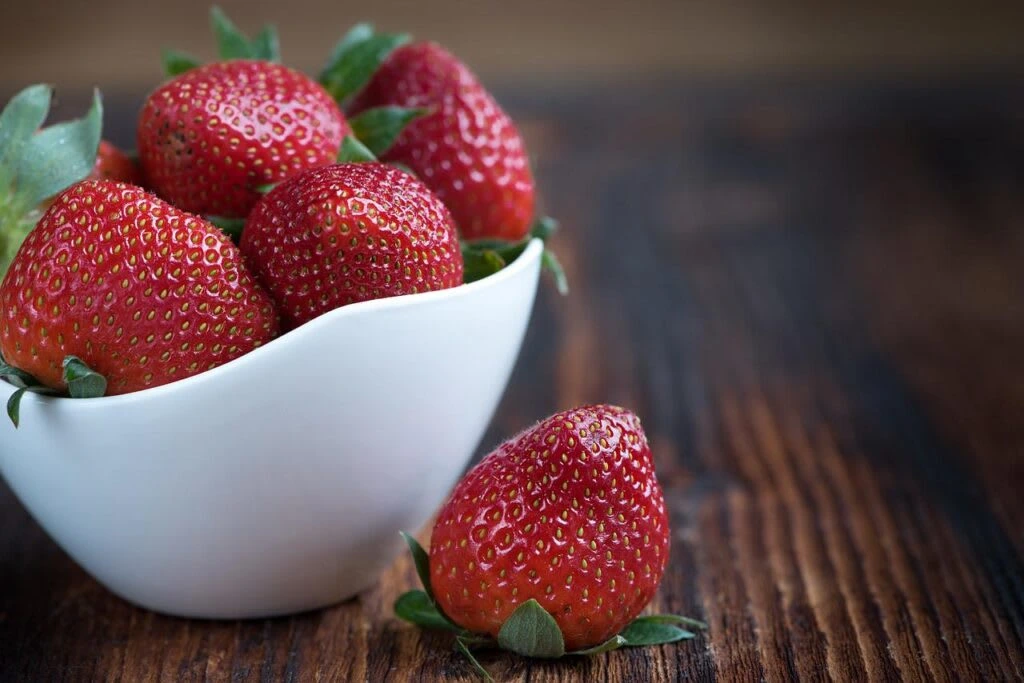7 Low-Sugar Fruits
Sugar-cutting may be all the rage these days, but if you’re thinking about eliminating fruit from your diet because it contains natural sugars, you should think twice.
All fruits contain sugar,although some varieties have higher levels than others. When trying to control their sugar intake, they often avoid or cut back on soda, chocolate, or sweets, but fruit may not be on their mind. However, if you’re cutting carbs the healthy way and don’t want to overdo it on high-sugar fruits like bananas, there are plenty of low-carb, nutrient-dense options.
Certain fruits are consideredlow in sugar because you can eat a larger portion with a smaller amount of carbohydrates and sugar. Most fruits have a low glycemic index due to the amount of fiber they contain and because their sugar is mostly fructose, plus they’re versatile and tasty.

Here are 7 fruits to feel good about when indulging in your sweet fruity tastes:
Strawberries
Strawberries, like many other berries, are often high in fiber and very low in sugar. Berries are a good choice when it comes to picking low-sugar fruits. A cup of strawberries contains only 7 grams of sugar and provides almost, if not more than your daily allowance of vitamin C.
Grapefruit
This low-sugar fruit is a portion of popular breakfast food. The best way to minimize your sugar intake is to pay attention to portion sizes, says Taub-Dix. Grapefruit is a great option as an alternative to sugary snacks, but depending on your needs, you may not want to eat it whole. Half of one of the fruits contains 8 grams of sugar.
Peaches
Although they taste sweet, a medium-sized peach only contains about 13g of sugar. Nothing quite compares to the satisfying feeling of sinking your teeth into a juicy, sweet, and tangy peach. Just one medium-sized peach contains up to 13.2% of the vitamin C you need every day. This nutrient helps your body heal wounds and keeps your immune system strong.
Plums
These late summer favorites are just 7 grams of sugar and 30 calories each. The great thing about plums is that you can get creative with them and make things like jams and marmalades without sugar. The plums are medium-sized. drupe. The most popular variety has a deep purple skin with yellow flesh inside, plums that are greenish-yellow can also be found. All varieties have a pit in the center of the fruit that is not edible. Dried plums are called plums.

Raspberries
These berries are surprisingly low in sugar given their sweet taste — there are only 5 grams of sugar in a cup. And with 8 grams of fiber, they’re more filling than other fruits. Raspberries are the edible fruits of a species of plant in the rose family. Raspberries also contain small amounts of vitamin A, thiamine, riboflavin, vitamin B6, calcium, and zinc.
Lemons and limes
Not many people would choose a lemon or lime as a snack. However, with no more than 2g of sugar per fruit and high in vitamin C, they make a great addition to a person’s diet. People can squeeze a lemon or lime in sparkling water to replace other sugary fizzy drinks, or even squeeze lemon juice over a salad instead of using salad dressing. These two citrus fruits are packed with vitamin C, a powerful immune booster. Vitamin C helps the immune system by attacking the nucleic acid of virus cells and also kills bacteria.
Avocados
Yes, avocados are actually a fruit. That big hole in the middle counts as a seed, which is one of the distinctive features of fruit. Avocados are packed with healthy fats that protect the heart and lower cholesterol, as well as phytochemicals that reduce oxidation and inflammatory stress. Avocados have almost no sugar. They’re also a good source of healthy fats and fiber.
Like this project
Posted Apr 17, 2022
Engaging SEO article writing.
Likes
0
Views
19




